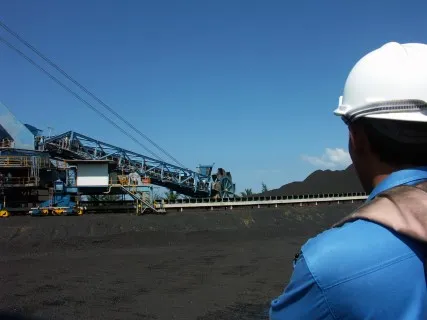
Shenhua cut back coal production, curtailed planned mine expansions
In the context of China's production restrictions.
It has been noted that the China National Coal Association implemented production restrictions for large scale low cost coal miners in Shanxi-Shaanxi-Inner Mongolia in 2014 as demand started falling.
According to a research note from Jefferies, while these production restrictions did not stop the fall in prices, it believes it slowed the process and likely prevented a chaotic collapse with demand falling ~17% over two years. QHD prices slid from ~Rmb600/ton to ~Rmb350/ton over this period.
Jefferies believes coal prices have bottomed with QHD prices recovering ~Rmb20/ton from November 2015 lows. Further, it says China's coal demand is crossing a very flat supply curve which will prevent prices from changing materially, both up or down. At this point, production restrictions have done as much as they can to support prices.
The report also noted that, in the context of China Shenhua Energy, Shenhua has been noted as holding back. Shenhua's 2015 commercial coal output fell 12% from 2013 levels as a result of production restrictions.
Here's more from Jefferies:
We believe Shenhua did not just cut back production, it also curtailed previously planned mine expansions, especially in low cost open-pit mines in Inner Mongolia. Our 2012 forecast for Shenhua's 2015 output was 22% higher than what was actually achieved, with Inner Mongolia output 48% higher.
Holding back versus cutting losses. China Coal (1898HK, Underperform, TP: HK$1.75) and Yanzhou Coal (1171HK, Underperform, TP: HK$1.90) cut production from 2013 levels by 20% and 7% respectively. We believe, however, that cuts by these companies differ in kind from Shenhua's output reductions.
Shenhua was forced to hold back economic output for social service while China Coal and Yanzhou Coal slashed high cost output to cut losses as prices declined. China Coal's output reductions has reduced unit costs by ~14% from 2013 levels. This likely will still not prevent losses in 2015. We believe Yanzhou Coal is also suffering losses despite reductions in unit cost.
Filling new rail-lines. Coal transported by rail has fallen precipitously after demand peaked. Many railroads have lowered transportation tariffs. We believe west-east coal transport volumes have been curtailed along with production, especially from Inner Mongolia, the province hardest hit by production restrictions.
We believe Shenhua's newly completed Bazhun and Zhunchi lines, which debottlenecks the company's Inner Mongolian mines, are largely unused with the restriction of Shenhua's Inner Mongolian mine expansions. We expect this will change.








![Cross Domain [Manu + SBR + ABF + ABR + FMCG + HBR + ]](https://cmg-qa.s3.ap-southeast-1.amazonaws.com/s3fs-public/styles/exclusive_featured_article/public/2025-01/earth-3537401_1920_4.jpg.webp?itok=WaRpTJwE)









 Advertise
Advertise


